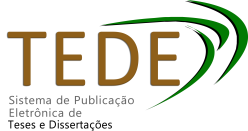| Compartilhamento |


|
Use este identificador para citar ou linkar para este item:
https://tedebc.ufma.br/jspui/handle/tede/5559Registro completo de metadados
| Campo DC | Valor | Idioma |
|---|---|---|
| dc.creator | LOBATO, José João Santos | - |
| dc.creator.Lattes | http://lattes.cnpq.br/1631398607853930 | por |
| dc.contributor.advisor1 | ROCHA, Maira Teresa Gonçalves | - |
| dc.contributor.advisor1Lattes | http://lattes.cnpq.br/1550970069538080 | por |
| dc.contributor.referee1 | ROCHA, Maira Teresa Gonçalves | - |
| dc.contributor.referee1Lattes | http://lattes.cnpq.br/1550970069538080 | por |
| dc.contributor.referee2 | VIANA, Raimundo Nonato Assunção | - |
| dc.contributor.referee2Lattes | http://lattes.cnpq.br/2070306377562824 | por |
| dc.contributor.referee3 | GARRIDO, Rosilan Mota | - |
| dc.contributor.referee3Lattes | http://lattes.cnpq.br/7597040299792316 | por |
| dc.contributor.referee4 | ROCHA, Viviane Moura da | - |
| dc.contributor.referee5 | MARTINS, Gersino dos Santos | - |
| dc.date.accessioned | 2024-10-10T18:46:29Z | - |
| dc.date.issued | 2024-05-16 | - |
| dc.identifier.citation | LOBATO, José João Santos. O estudo da cor integrado às práticas educacionais da aprendizagem da arte no ensino médio e sua contribuição para a formação do indivíduo em sua dimensão estética, sensível e intelectual. 2024. 188 f. Dissertação( Programa de Pós-graduação em Gestão de Ensino da Educação Básica) - Universidade Federal do Maranhão, São Luís, 2024. | por |
| dc.identifier.uri | https://tedebc.ufma.br/jspui/handle/tede/5559 | - |
| dc.description.resumo | Esta pesquisa focou no ensino e aprendizagem da cor na disciplina de Arte do Ensino Médio, contribuindo para a formação geral do cidadão. Até o momento atual, no século XXI, estudos de intelectuais, cientistas e artistas dedicaram-se a entender, explicar e aplicar a cor. O estudo abrange elementos da ciência, física, estética, fenomenologia, psicologia de apreciação simbólica e sua aplicação nas artes visuais, arquitetura, design, na vida sociocultural da humanidade. A cor contribui para o ensino e aprendizagem de Arte, para a formação do indivíduo em sua dimensão estética, sensível e intelectual. O objetivo geral da pesquisa é investigar como a cor pode contribuir para o ensino e aprendizagem de Arte, assim como para a formação estética e intelectual do indivíduo. As pessoas, embora apreciem a cor ao seu redor, tanto nas cidades quanto nos ambientes rural e industrial, nem sempre se dão conta de sua presença massiva em seu cotidiano. A presente dissertação organiza-se em três seções: a primeira, Breve estudo da cor na História da Arte como elemento da Linguagem Visual, apresenta conhecimentos fundamentados na História da Arte, referindo-se a vários de seus períodos em que a cor se faz presente nas artes. A segunda seção, A cor na formação estética, sensível e intelectual do indivíduo, examina elementos da estética no fenômeno em que a cor se constitui, atingindo o complexo sensório e intelectual da humanidade, e aspectos próprios de sua visualização e percepção em conjuntos cromáticos e de seu uso intencional a partir da estrutura natural e biológica do cérebro. No que se refere ao processo metodológico adequado ao ensino e aprendizagem de Arte, são aplicados conhecimentos da abordagem da professora Ana Mae Tavares Bastos Barbosa (2008, 2010, 2012) com sua característica abrangente e três eixos, tratando do contexto histórico e cultural; da apreciação do objeto artístico; e de uma concomitante prática esclarecendo sobre sua aplicação nas artes. A terceira seção, Práticas educativas do ensino e aprendizagem de arte contribuindo para o entendimento da cor, aborda as práticas com a cor, concorrendo para seu melhor entendimento, incluindo a ocorrência dos contrastes simultâneo, sucessivo e misto, interagindo em espaços nos quais a cor é aplicada. São vistos ainda esquemas básicos de aplicação da cor em conjuntos cromáticos com materiais de cor organizados mediante elementos de semelhança ou diferença. Esta pesquisa pauta-se pela aplicação da pesquisa qualitativa em sua abordagem e, quanto aos Métodos de Investigação Científica, destacamos o Fenomenológico e o da Psicologia da Arte, com ênfase em Merleau-Ponty (1998) e Edmund Husserl e Eva Heller (2021). Para a realização deste trabalho, contribuíram várias literaturas de estudiosos da cor, sendo os principais Betty Edwards (2004), Israel Pedrosa (1999; 2012), Luciana Martha Silveira (2015) e Eva Heller (2021), entre outros de relevância para a pesquisa. Como principais resultados, pretende-se refletir sobre o ensino-aprendizagem da cor na obra artística e também na História da Arte, a cor contribuindo para a formação estética, sensível e intelectual do indivíduo, a construção de um produto desenvolvido como recurso didático-pedagógico sobre a cor no ensino de Arte, os quais devem compor a conclusão geral deste estudo. | por |
| dc.description.abstract | This research focused on the teaching and learning of color in high school art, which contributes to the general education of citizens. Up to the present moment in the 21st century, there are studies by intellectuals, scientists and also artists who have dedicated themselves to understanding, explaining and even about how to apply color. In his study, elements of science, physics and aesthetics are configured, as well as elements of phenomenology, psychology of symbolic appreciation, and its application in the visual arts, architecture, design, as well as in the sociocultural life of the human being. As a general objective of the research, we will have to investigate how it is possible that color can contribute to the teaching and learning of art for the formation of the individual in its aesthetic and intellectual dimensions. Although people can appreciate the color around them, whether in cities or in rural and industrial environments, they are not always aware of its massive presence in their daily lives. This dissertation is organized into 3 sections: In the first section: A brief study of color in the History of Art as an element of Visual Language, knowledge that is based on the history of art is presented, referring to several of its periods where color is present in the arts. In the second section: Color in the aesthetic, sensitive and intellectual formation of the individual, elements of aesthetics are seen, of the phenomenon in which color is constituted, reaching the sensory and intellectual complex of the human being, and also aspects of its visualization and perception in chromatic sets, and their intentional use based on the natural and biological structure of the brain. With regard to the methodological process suitable for teaching and learning art, knowledge of the approach of Professor Ana Mae Tavares Bastos Barbosa will be applied according to its very comprehensive characteristic with three axes, dealing with the historical and cultural context; appreciation of the artistic object, and a concomitant practice clarifying its application in the arts. The third section deals with: Educational practices of teaching and learning art contributing to the understanding of color, practices with color will be addressed, contributing to its better understanding, in this context there is competition of simultaneous, successive and mixed contrasts, interacting in spaces where color is applied. Basic color application schemes are also seen in chromatic sets with color materials being organized by element of similarity or difference. This research is guided by the application of qualitative research in its approach and regarding the Scientific Investigation Methods we emphasize the Phenomenological and the Psychology of Art, among the theorists of the Phenomenological Method we highlight Merleau-Ponty, Edmund Husserl e Eva Heller. To carry out this work, several literatures by scholars of color competed, the main ones being Betty Edwards, Israel Pedrosa; Luciana Martha Silveira, among others relevant to the research. As main results achieved, it is intended to reflect on the teaching-learning of color in the artistic work and also in the history of art, the color contributing to the aesthetic, sensitive and intellectual formation of the individual, the construction of a product developed as a didactic-pedagogical resource about color in art teaching, which should form the general conclusion of this study. | eng |
| dc.description.provenance | Submitted by Maria Aparecida (cidazen@gmail.com) on 2024-10-10T18:46:29Z No. of bitstreams: 1 JOSÉ JOÃO SANTOS LOBATO.pdf: 10856481 bytes, checksum: 0553596e76c7f97ec4d5ba9db5e94567 (MD5) | eng |
| dc.description.provenance | Made available in DSpace on 2024-10-10T18:46:29Z (GMT). No. of bitstreams: 1 JOSÉ JOÃO SANTOS LOBATO.pdf: 10856481 bytes, checksum: 0553596e76c7f97ec4d5ba9db5e94567 (MD5) Previous issue date: 2024-05-16 | eng |
| dc.format | application/pdf | * |
| dc.language | por | por |
| dc.publisher | Universidade Federal do Maranhão | por |
| dc.publisher.department | DEPARTAMENTO DE EDUCAÇÃO I/CCSO | por |
| dc.publisher.country | Brasil | por |
| dc.publisher.initials | UFMA | por |
| dc.publisher.program | PROGRAMA DE PÓS-GRADUAÇÃO EM GESTÃO DE ENSINO DA EDUCAÇÃO BÁSICA | por |
| dc.rights | Acesso Aberto | por |
| dc.subject | Arte; | por |
| dc.subject | Ensino de Arte; | por |
| dc.subject | Estudo da cor | por |
| dc.subject | Art; | eng |
| dc.subject | Art teaching; | eng |
| dc.subject | Study of color | eng |
| dc.subject.cnpq | Artes | por |
| dc.title | O ESTUDO DA COR INTEGRADO ÀS PRÁTICAS EDUCACIONAIS DA APRENDIZAGEM DA ARTE NO ENSINO MÉDIO E SUACONTRIBUIÇÃO PARA A FORMAÇÃO DO INDIVIDUO EM SUA DIMENSÃO ESTÉTICA, SENSÍVEL E INTELECTUAL | por |
| dc.title.alternative | THE STUDY OF COLOR INTEGRATED INTO EDUCATIONAL PRACTICES OF ART LEARNING IN HIGH SCHOOL AND ITS CONTRIBUTION TO THE FORMATION OF THE INDIVIDUAL IN HIS AESTHETIC, SENSITIVE AND INTELLECTUAL DIMENSION | eng |
| dc.type | Dissertação | por |
| Aparece nas coleções: | DISSERTAÇÃO DE MESTRADO - PROGRAMA DE PÓS-GRADUAÇÃO EM GESTÃO DE ENSINO DA EDUCAÇÃO BÁSICA | |
Arquivos associados a este item:
| Arquivo | Descrição | Tamanho | Formato | |
|---|---|---|---|---|
| JOSÉ JOÃO SANTOS LOBATO.pdf | Dissertação de Mestrado | 10,6 MB | Adobe PDF | Baixar/Abrir Pré-Visualizar |
Os itens no repositório estão protegidos por copyright, com todos os direitos reservados, salvo quando é indicado o contrário.




